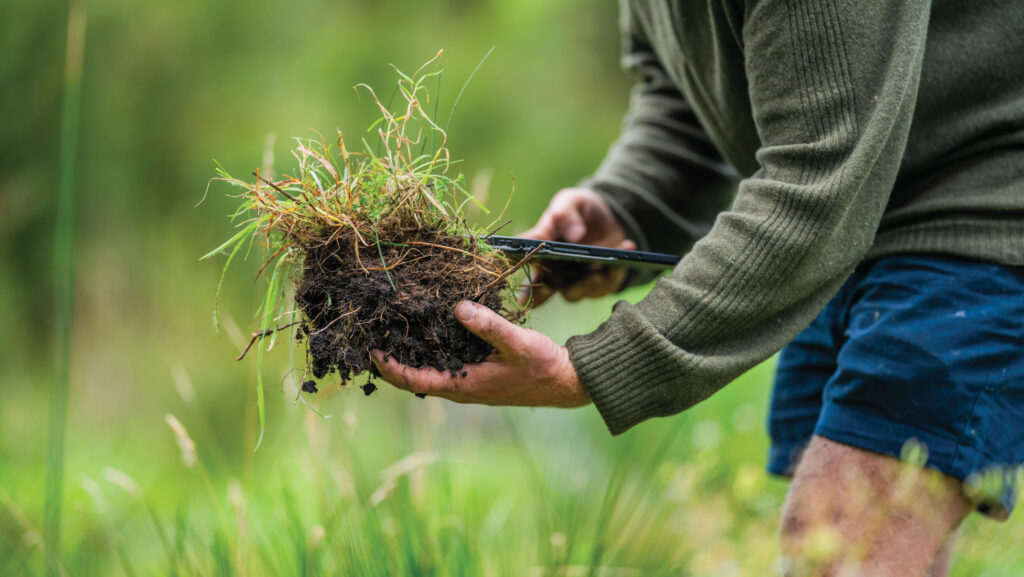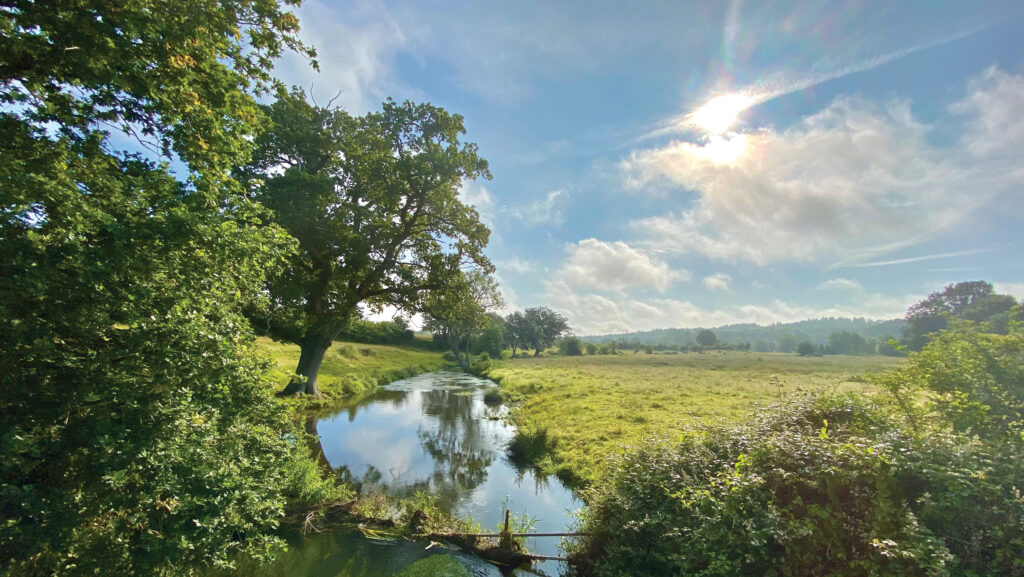How industry is baselining emissions on farm
 © Adobe Stock
© Adobe Stock Baselining, the latest environmental buzzword, looks at emissions and carbon stores on individual farms, providing an initial marker against which progress can be measured.
At a larger scale, across hundreds of farms, baselining can be used by the industry to show averages and even inform environmental policy.
See also: Nature envoy must work with farmers to restore countryside
Banks, levy boards, and government departments have all started to roll out baselining schemes in order to capture data and lead the charge.
Pilot scheme
AHDB launched its own baselining pilot scheme earlier this summer and received more than 500 applications.
This figure was whittled down to 170 farm businesses for the pilot, to give a fair representation of arable, beef and lamb, pork, and dairy enterprises.
The levy board will initially invest £2.5m in the pilot, with a further £375,000 being contributed by Quality Meat Scotland.
Aerial scanning of trees and hedgerows, soil carbon measurements, soil analysis, and carbon audit and action plans will all be utilised on-farm as measurement tools.
Chris Gooderham, environmental director at AHDB, said the “above-ground” work should begin in November and run through until February, as it is best to carry the scans when the leaves are off the trees.
Soil testing also forms part of the pilot and is due to commence in the coming months, working around individual farm requirements to avoid disturbing crops in the ground.
Mr Gooderham said: “The soil testing is the really expensive bit, there are satellite companies out there that say they can measure soil carbon from satellite imagery.”
He added that a hybrid approach may be used, using satellite imagery, but “ground proofing” it at each farm as well.
Influencing policy
The results of baselining projects have the potential to change future government policy, with accurate UK figures being made available instead of global averages.
It could even lead to reductions to the 10% on-farm tree planting targets in Wales.
Mr Gooderham said: “What we have seen so far is that 90% of carbon is in the soil, it’s not in the trees. So if your aspiration is to sequester more carbon, give the farms the flexibility to do that in the right way for their farm.
“It might mean starting by liming the ground and getting the PH right, and that can drive the improvement. Baselining is giving the flexibility that enables farmers to make the decisions that are right for them”
Industry-funded schemes
The Soil Association Exchange, with funding from Lloyds Banking Group, has already taken baseline measurements on 685 farms covering 240,000ha of UK farmland during the past three years.
Joseph Gridley, chief executive of Soil Association Exchange, said: “The need to adopt environmental measurement at scale is clear.
“Baselining UK farms with a common methodology provides a route forwards and addresses the real risk of inaction and scepticism in collating data.
“Our approach also offers farmers confidence to make informed decisions; balancing environmental sustainability with profitability, ensuring farmers have the tools and guidance they need to access the funding needed to support their transition.”
Two reports have been produced off the back of this baselining project which showed that across all of the farms surveyed, soils averaged 3.34% soil organic carbon.
Looking at average soil organic carbon by enterprise, beef cattle and sheep achieved 4.92%, while arable cropping enterprises were considerably lower at 2.54%.
The Soil Association Exchange From Data to Decisions report said livestock in particular play a large role in farm emissions, but are also pivotal to not only soil health, but to overall biodiversity and the rural community.
How to cut emissions
- Reduce fertiliser use or look at alternative products
- Integrate a soil nutrient management plan to study soils and meet crop needs
- Tree planting in unproductive areas and infilling hedges
- Adjusting crop rotations to improve soil quality
Source: Soil Association
Baselining in action in Northern Ireland
The Department of Agriculture, Environment and Rural Affairs (Daera) in Northern Ireland has been undertaking a nationwide baselining project, which aims to test the majority of the 650,000 fields in Northern Ireland.
Landowners were actively encouraged to join its Soil Nutrient Health Scheme and have been warned they may not be eligible for future farm support payments if they decide to opt out.
This has resulted in an uptake in excess of 90% by farms during the initial rounds of the project.
Daera minister Andrew Muir said: “Over 12,000 farm businesses in zones one and two are already benefiting from taking part in the scheme, by receiving valuable information which helps them match slurry, fertiliser and lime applications to crop needs more accurately.
“This will help to increase efficiency while also reducing the farm’s environmental footprint.”
A further 5,900 businesses have recently signed up for testing in zone three, with the fourth and final zone in the North East due to open in 2025.
Alex Higgins, senior scientist at the Agri-Food and Biosciences Institute said the majority of fields in zone three will be sampled from November onwards and, once sampled, farmers can expect to receive their soil sample analysis results within four to six weeks.
Alex added that businesses will also be provided with map-based soil nutrient results, runoff risk maps, and estimates of carbon in soil and above ground biomass, such as trees and hedges.
Water quality

© Istockphoto/Keith Rose
Defra’s Farming Rules for Water policy paper in 2018 established a baseline for water quality and the impact of agriculture.
Ian Ludgate, NFU environment adviser, said baselining can be a bit of an issue when it comes to various targets that industry is being asked to meet.
The NFU is currently in the early stages of its own baselining work, with a focus on water quality, and is looking to partner with other organisations.
Mr Ludgate said there was a gap that needed filling around how the baseline translates to individual farms who are looking to make progress.
“As an organisation, we know that the industry needs to build on past progress and make further progress.
“There are various indicators and there is data out there that farms can potentially use. What we are interested in doing is empowering farmers to collect their own data,” he said.
“The catchments with the higher profiles such as the River Wye, you might see leading the way on these things. If you can find a model that works there, it could be taken to other catchments that might have similar issues in the future.”
Farm data – who owns it and who pays for it?

© Adobe Stock
Accurate and reliable data can be a valuable asset to any farm business. From average yields to environmental measurements, a whole host of data is collected, but questions remain about who should have access to it and who should pay for it.
Farm Data Principles was founded in 2023 to continue the work of the previous British Farm Data Council and create a voluntary code of practice to protect farm data.
The organisation provides certification for different schemes and is headed up by a wide range of board members from industry including the NFU, AHDB, Hutchinsons and Yagro.
Farm Data Principles chair professor Tina Barsby said: “Good farm data governance is essential if farmers in the UK are to have trust in companies and organisations who are bringing data tools to the market and handling on-farm data.”
Since its formation earlier this year, six organisations have been fully certified, including Red Tractor, with a further three organisations provisionally approved.
NFU chief science and regulatory affairs adviser Dr Helen Ferrier added that, without good governance in place, farmers were not only vulnerable and underinformed, but could be giving away a huge amount of benefit from the data revolution.
